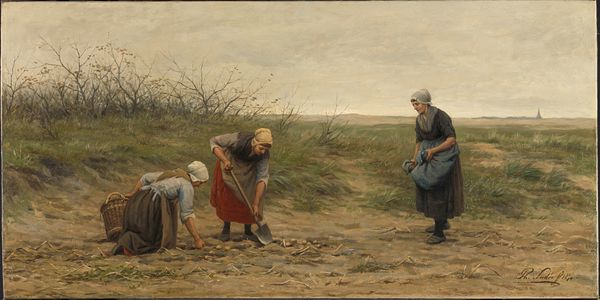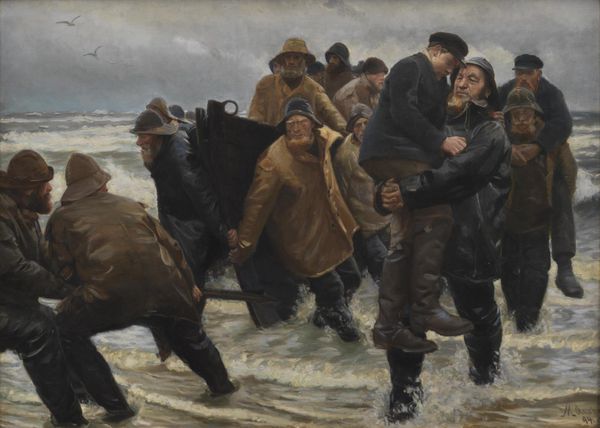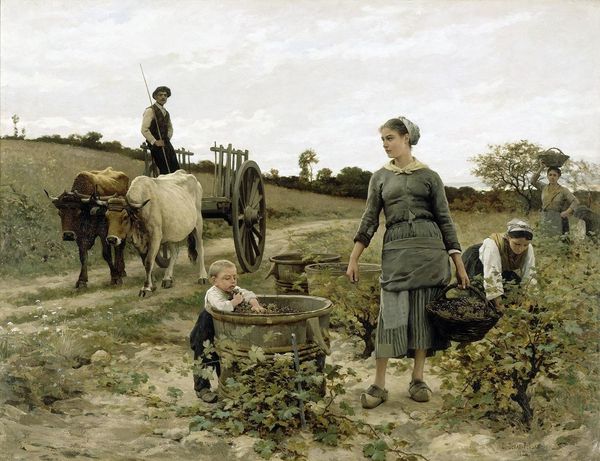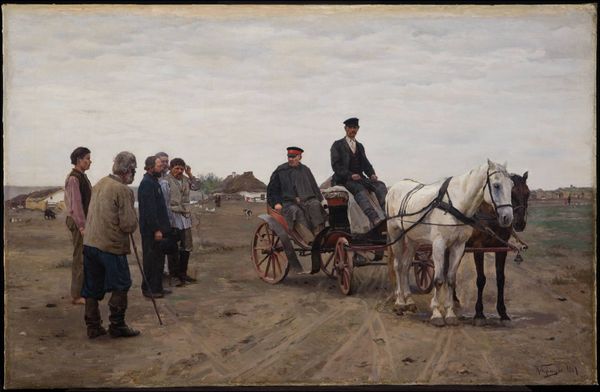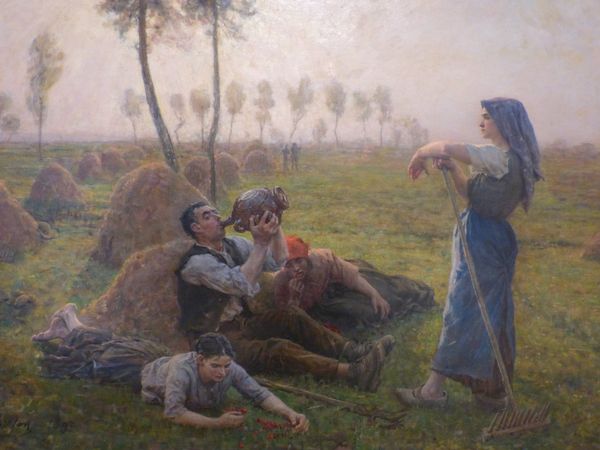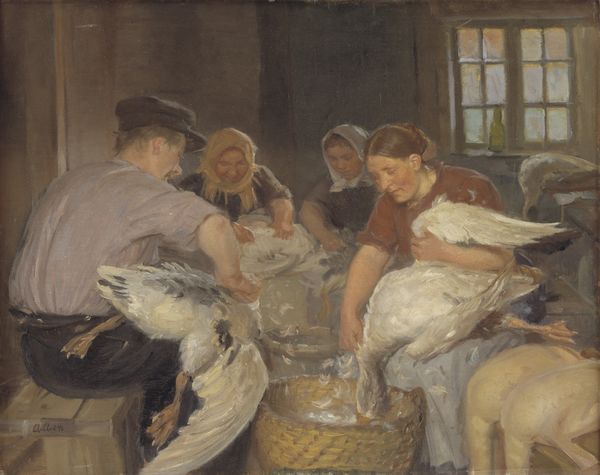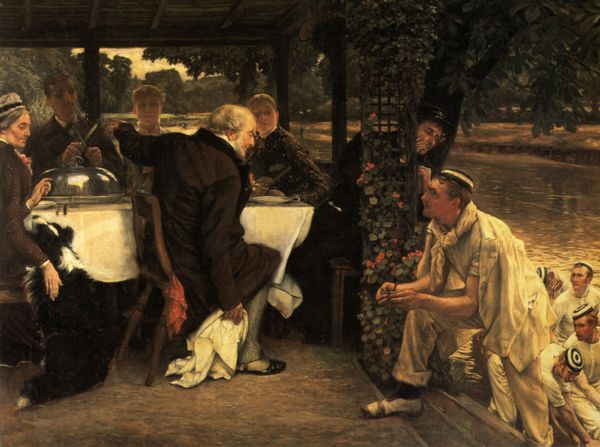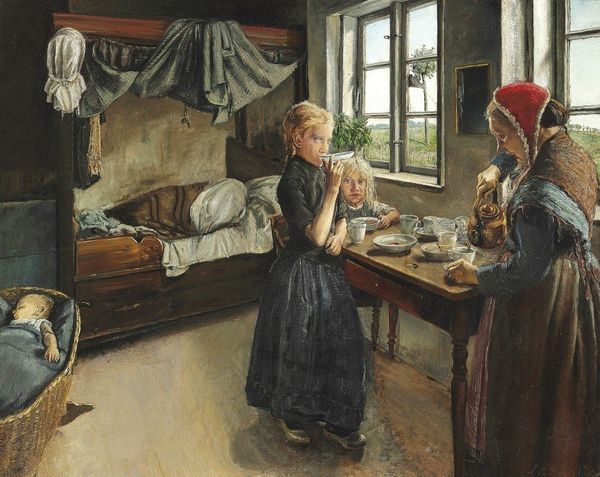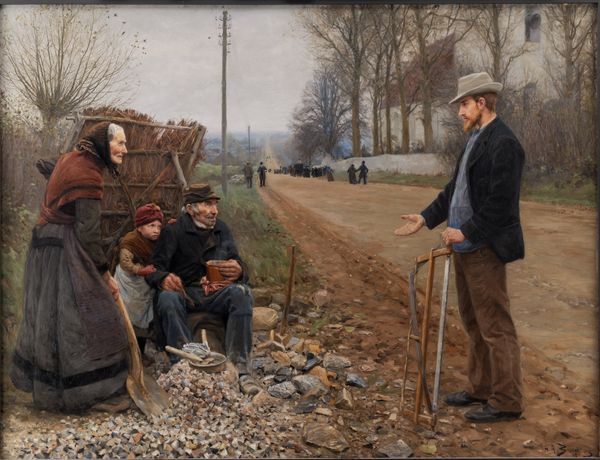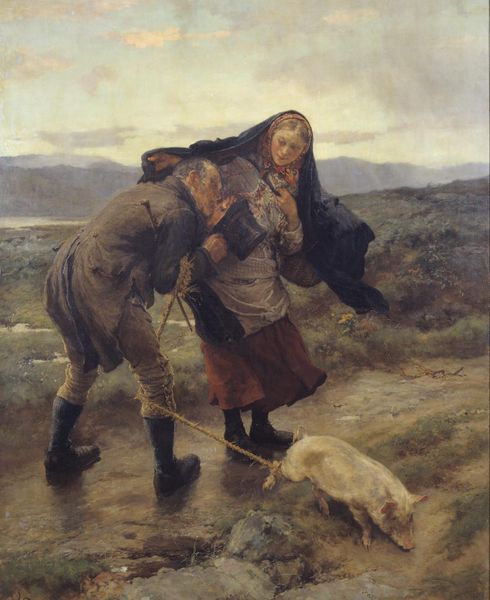
Dimensions: 131.5 cm (height) x 187 cm (width) (Netto)
Curator: I'm struck by the immediate pathos of this scene, this feeling of collective mourning. Editor: This is Erik Henningsen’s "A Wounded Workman," painted in 1895, using oil on canvas. Note the careful compositional arrangement: the horizontal emphasis of the stretcher bearing the injured man sharply bisects the vertical rise of the industrial scaffolding behind, creating a stark juxtaposition between labor and consequence. Curator: Yes, that contrast speaks volumes. The scaffold, a symbol of progress and industry, looming over the prone figure...it's a powerful visual statement on the human cost of that progress. I see echoes of the pieta. Editor: That's precisely it; the image invites a symbolic reading. The recurring motif of white throughout – the bandage, the cloth, the abandoned hat – functions as a signifier of purity and, tragically, of life prematurely ended, underscoring the sense of loss and violated innocence. Curator: Consider the formal repetition, too, of downturned heads, each angled and cropped with subtle variations that communicate a shared grief. It really anchors this work in a social realism. The architecture feels deliberate and controlled, too, reflecting not just a snapshot but a studied, almost staged moment. Editor: This historical painting invites multiple cultural interpretations, of course, depending on how one sees that carefully built scene, where social roles—the somber police officer in uniform, the grieving figures clustered around the injured—tell of broader cultural forces that converge in times of disaster. Curator: For me, the stark portrayal forces consideration about what this artwork signifies regarding worker vulnerability then and now. In focusing the narrative on such a fraught interaction between social classes and power structures, Henningsen's work delivers a timeless truth. Editor: Indeed, whether it is about the contrast in light, composition, color, or those contrasts and the human truths they represent, Henningsen’s work serves as a complex interplay that continues to speak to us today.
Comments
No comments
Be the first to comment and join the conversation on the ultimate creative platform.


